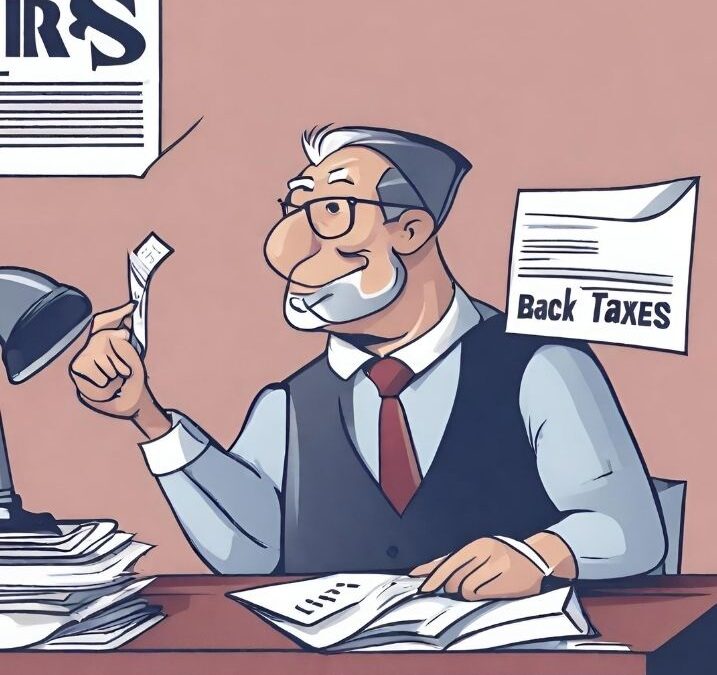Grasping the regulations and time limits for the IRS‘s pursuit of unpaid taxes is vital for individuals confronted with such matters, especially with the guidance of tax lawyers from Victory Tax Lawyers. This article investigates the primary question: How long does the IRS have to collect back taxes? It further explores supplementary inquiries about the authorized period for the IRS to pursue these outstanding taxes under the expert advice of these legal professionals.
Definition of CSED
Back taxes refer to any taxes that an individual or business owes from previous years. The IRS has a specific period during which it can legally collect these taxes. This period is known as the “Collection Statute Expiration Date” (CSED). Understanding the CSED is vital for anyone dealing with back taxes.
The Collection Statute Expiration Date (CSED)
The CSED, or Collection Statute Expiration Date, is a critical concept in U.S. tax law, governing the duration within which the Internal Revenue Service (IRS) is authorized to collect outstanding tax debts. This period typically extends for ten years from the date the tax liability was officially assessed, which is usually the date the tax return was filed or the date the tax was determined to be due, whichever is later. Once this ten-year period elapses, the IRS can no longer legally enforce collection of the back taxes.
This limitation on the collection period serves as a safeguard for taxpayers, ensuring that tax collection efforts are not indefinite. However, certain actions, such as filing for bankruptcy, submitting an Offer in Compromise, or entering into an installment agreement, can extend or toll the CSED. The IRS may also extend the CSED in specific circumstances, such as when a taxpayer agrees to an extension in writing.
Understanding the CSED is vital for taxpayers who have outstanding tax debts. It provides them with a clear timeline for when their tax liabilities will no longer be enforceable. However, it’s important to note that while the CSED limits the time for legal collection activities, it does not erase the tax debt unless it is paid or otherwise resolved. Therefore, taxpayers are encouraged to address their tax liabilities within this timeframe to avoid continued accrual of interest and penalties and potential legal action from the IRS.
Factors Affecting the CSED
Several factors can affect the length of the CSED:
- Extension Agreements: If a taxpayer enters into an agreement with the IRS to extend the time for collection, this can extend the CSED. Such agreements are typically made when a taxpayer needs more time to pay or is negotiating the terms of their debt. Extension agreements must be in writing and are often used in conjunction with installment agreements or other payment arrangements.
- Bankruptcy Filings: The period during which a bankruptcy case is pending can toll (pause) the CSED. This suspension of the CSED lasts for the duration of the bankruptcy proceedings, plus an additional six months thereafter. It is important for taxpayers to understand that declaring bankruptcy does not necessarily eliminate tax debts, but it can provide temporary relief from collection actions.
- Collection Due Process Hearings (CDP): If a taxpayer requests a CDP hearing, the CSED is tolled until the conclusion of the hearing, plus any additional time allowed for appeals. This tolling allows for the resolution of disputes over tax liens or levies. During the CDP hearing, taxpayers can present their case and propose alternatives to collection actions, such as installment agreements or offers in compromise.
- Innocent Spouse Relief: Applying for innocent spouse relief can also toll the CSED. This relief is sought when one spouse believes they should not be held responsible for tax liabilities attributable to the other spouse. The tolling period includes the time the IRS takes to make a decision on the application and any time allowed for appeals, protecting the requesting spouse from collection actions while their case is reviewed.
Actions That Reset the CSED
Certain actions can reset or restart the CSED:
- Submission of an Offer in Compromise: If rejected, the CSED is extended by the time the offer was under consideration plus 30 days. This extension allows the IRS additional time to reassess the taxpayer’s situation and potentially propose alternative payment options. Furthermore, it’s important to note that the extension begins from the date the offer was submitted, not from when it was rejected.
- Signing a Waiver: If a taxpayer signs a waiver agreeing to extend the collection period, this will reset the CSED. This action typically occurs when the taxpayer and the IRS mutually agree that more time is needed to resolve the tax debt, and it effectively grants the IRS additional time beyond the original CSED to collect the debt. Waivers are often used in complex cases where resolution may take longer than the standard collection period.
With the Guidance of Victory Tax Lawyers
The IRS typically has ten years to collect back taxes, starting from the date of assessment. However, various factors can extend or toll this period. It’s important for taxpayers to be aware of these factors and to seek professional advice if they’re dealing with back tax issues. With the guidance of tax attorneys from Victory Tax Lawyers, individuals can gain insights on ‘how long can IRS collect back taxes?’ and the complexities that come with it. These attorneys can provide valuable insight into how actions like submitting an Offer in Compromise or signing a waiver can impact the collection period, ensuring informed decisions are made. Their expertise is crucial in navigating the often intricate IRS policies and procedures, offering a strategic approach to managing and resolving back tax matters.
